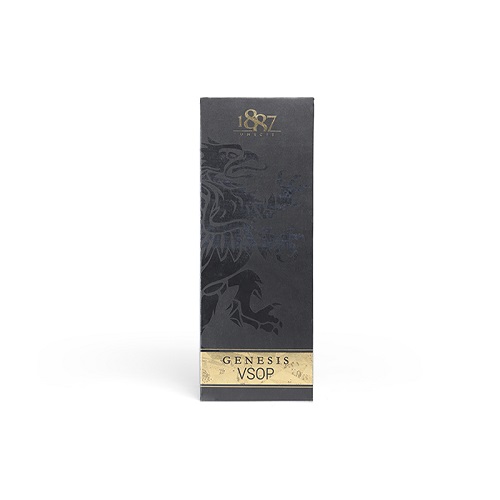Unique Factory Only Focused On
Wine Box
 admin
admin  2025-06-13
2025-06-13
The universe is big in the wine, and the sun and the moon are long in the pot. Wine is a kind of liquid commodity. Nowadays, on the shelves of the dazzling shopping malls, the first thing that catches people’s eyes is often the outer packaging of the wine ─ ─ wine box. For wine box packaging, the structure and pre-press design are very important, but the production process is very important. The design and the quality of the wine box packaging are also inseparable, so how to produce a wine box packaging that makes the customer's attention at first glance, might as well take a look at the following suggestions.
printing art

Offset printing can print exquisite multi-level patterns and achieve multi-color overprinting, but it is easy to produce color difference between batches and is difficult to control; the gravure ink layer is thick and full, and the color is stable; the screen printing ink layer is thick, the hand feels good, the three-dimensional impression is strong, and the effect is Diversity; Flexo printing process is flexible, but multi-color overprinting is not its strong point. Designers of wine box packaging should comprehensively apply various techniques to maximize strengths and avoid weaknesses.

There are three choices in process design: ①Use an 8-color printing machine to print directly; ②Use a monochrome gravure printing machine to print spot color blue, and then use a 7-color printing machine to print; ③Use an 8-color machine to print directly, but change the process design It is: C, M, Y, K, spot color gold, spot color blue, spot color blue, full-page matte oil (add the offset pearlescent ink to the matte oil).

It is not difficult to see from the above that the first choice is not good, because it needs to use spot color blue to achieve a large area of dark solid ground, only one unit of an offset press is used for printing, the ink layer is not thick enough, the hue is not saturated, and the expected effect is not achieved; The two schemes are better, but increase the process; the third option is better, printing spot color blue through two units not only guarantees the quality, but also reduces the process and equipment investment, and shortens the production cycle. However, ordinary workshop operators and quality control personnel lack this process integration design capability and need to be completed by professional designers.

Post-press process
The printing industry often uses film to protect the printed products, enhance the abrasion resistance of the printed products, and protect the edges and corners of the printed products. A new type of laminating process using PUR adhesive is now introduced, but the matching machine is expensive. At present, traditional water-based adhesives and oil-based adhesives are mainly used in the industry, but the printed products are easily deformed after being coated. The process is troublesome, and the loss remains high. The screen printing process after laminating generally requires the surface tension of the film to be above 38mN/m, otherwise the adhesion of the screen printing ink will become poor and the ink will easily fall off; the matching requirements for the hot stamping material after laminating will also increase accordingly.
In fact, the stupid way to protect the printed product is to cover it, because although this method can protect the corners of the printed product from whitening due to the explosion of paper and ink, all water-based adhesives and oil-based adhesives are not resistant. Friction, sticking to the outside of the ink will cause flowers when touched. In contrast, pre-coating film can also improve the wear resistance of printed products, but it is expensive. This requires multi-process integrated design for printed products.

Carefully analyze, why are there a large number of laminating processes in the traditional printing industry? Because it used to be ordinary offset printing, the ink is not easy to dry, and the ink particles are fine and not resistant to friction, so it needs to be protected with an adhesive film. The current UV ink printing is dry, the ink particles are relatively thick and hard, and the abrasion resistance is far better than that of the film, so the use of UV offset printing can abandon the filming process
If customers are looking for a matte effect, they can use matte oil instead.
For the problem of color explosion at the corners and edges of the product, you can add a colorant to the composite adhesive used to make the composite paper to make the color similar to the printing color of the face paper; if the color explosion occurs after the die-cutting indentation, you can adjust the die-cutting pressure The width of the trace line, modify the angle of the corners to relieve pressure and prevent color burst.

Other matters needing attention
The assembly cost of wine box packaging production accounts for about 30% of the total production cost. A small batch (200-500) trial production before mass production can avoid risks and optimize the selection of semi-finished parts, knife molds, molds, etc. Greatly increase the rate and reduce the cost.
In addition, after the small-batch printing of wine box packaging is completed, different packaging functional testing standards should be formulated according to different customers, products and packaging and transportation methods, including ageing testing, high and low temperature cycle testing, vibration testing, drop testing, and stacking. Code testing, packaging and transportation testing, odor testing, heavy metal foreign body testing, etc., to ensure that wine box packaging fully meets customer requirements.